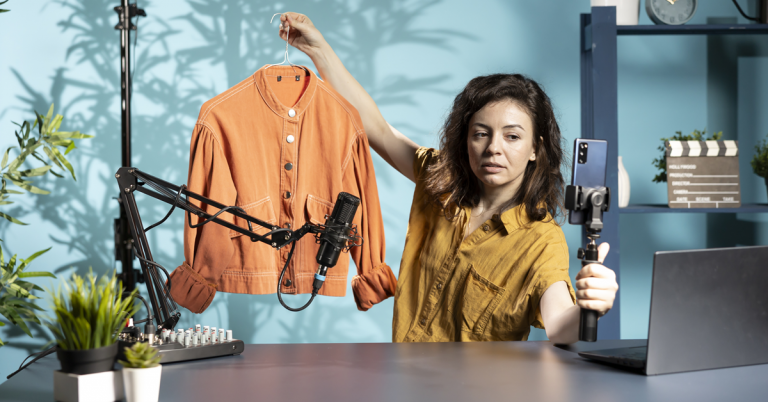I Bought It On TikTok: How Social Media Is Fuelling Impulse Buys In Malaysia

How many times does this happen to you and how frequently? You open TikTok for an innocent 5-minute scroll and suddenly, your cart is full. A magnetic eyelash curler, a glowing skin serum, a portable blender you never knew you needed- everything seems lucrative and a “must-buy”. If this sounds familiar, you’re not alone.
In Malaysia alone, TikTok Shop sees over 100 million product searches every single day, according to the Malaysian Communications and Multimedia Commission (MCMC). With more than 13 million local users and counting, the platform has rapidly become a hotbed for impulse purchases, driven by algorithm-powered content, live-streamed flash deals and the addictive power of FOMO (fear of missing out).
A recent study by the Communications and Multimedia Consumer Forum of Malaysia (CFM) revealed that over 60% of social media users in the country admit to making unplanned purchases online, many of which are triggered by viral videos or influencer endorsements.
And while some of these purchases may genuinely improve your life, many others are leading to buyer’s remorse, credit card debt or cluttered drawers of unused gadgets.
Social media is the new pasar malam
Gone are the days when impulse buying meant picking up sweets at the checkout lane. Now, platforms like TikTok and Instagram have become hyper-personalised digital bazaars, with sellers, influencers and even everyday users promoting products through videos, unboxings and before-and-after reels.
In Malaysia, TikTok Shop and Shopee Live have especially driven this behaviour. According to a July 2025 survey by Vase.ai, a staggering 87% of Malaysians surveyed said they had made a purchase after seeing a product on TikTok. The platform’s blend of entertainment and commerce is blurring the lines between content and consumption—making it easier than ever to click “Buy Now” without a second thought.
Some of the most common impulse purchases include:
- Skincare and beauty products
- Kitchen gadgets and “aesthetic” appliances
- Health supplements and slimming products
- Fast fashion and viral accessories
Why are we buying so fast?
There’s psychological science behind it. Social media is designed to keep us engaged—and sellers know how to capitalise on that. Here’s how:
- Short-form videos create urgency: TikToks are fast-paced and visually persuasive. They show instant results, limited-time offers or “must-haves” that feel urgent.
- Live selling mimics flash deals: TikTok Live and Shopee Live often include countdown timers, vouchers and free gifts for fast checkouts.
- Parasocial influence: When your favourite influencer swears by a skincare product, you feel like a trusted friend is recommending it. This bypasses traditional scepticism.
- Buy now, pay later (BNPL) options: Services like Atome and Grab PayLater are making it easier to buy without thinking through the long-term cost.
From RM30 to RM300: The cost of “just one thing” and risks involved
It’s easy to justify small, seemingly harmless purchases- “It’s just RM25, what’s the harm?” But when those buys are repeated across platforms over the course of a month, the costs add up fast. Many Malaysians find themselves surprised, even alarmed, by the amount they’ve spent on TikTok hauls, Shopee Live flash deals or limited-time bundles. A quick poll of users in the Klang Valley revealed that four in five had made at least one unplanned purchase from social media in the past month. Nearly half had spent more than RM200 in this way and one in three admitted they regretted at least one of their impulse buys.
Beyond the hit to your wallet, this trend comes with other risks. The widespread use of Buy Now, Pay Later (BNPL) services may make purchases feel more affordable at the moment, but they can quietly pile up into debt if not managed carefully. Impulse buying also contributes to overconsumption and household waste, as many of these items are either duplicates of things we already own or are quickly forgotten. Then there’s the issue of quality- many viral products are mass-produced, unregulated or counterfeit, leaving buyers disappointed. Perhaps most overlooked is the mental fatigue that follows, those feelings of regret, frustration or guilt after yet another unnecessary purchase.
Worse still is the addictive cycle that often forms: you scroll, you buy, you regret and then repeat. Social media is designed to keep us engaged and when that engagement is tied to spending, it becomes a financial trap that’s hard to escape.
Smart tips to shop mindfully
You don’t have to quit social media altogether but you can shop smarter. Here’s how:
✅ Set a monthly “impulse buy” budget
✅ Wait 24 hours before buying anything you saw on TikTok
✅ Read reviews outside of social media
✅ Check if the product is available from a reputable local seller
✅ Avoid saving your card details for one-click purchases
And most importantly, ask yourself: “Do I want this or do I just want what it promises?”
Final thoughts
Social media has redefined the way we discover and shop but with it comes the responsibility to pause and think. In a world where everything is one click away, financial mindfulness is more important than ever.
The next time you see a viral product promising glowing skin, clutter-free drawers or a happier life, just remember: the filter may be better than the product.
FAQs
Social media platforms are designed to be addictive. When products are shown by people you trust or admire, it creates emotional buying triggers.
Not always. While some are legitimate, others may be low-quality or unregulated. Always do your research before buying.
Set a fixed monthly budget for non-essential purchases. Avoid saving your payment details for auto checkout.
BNPL can make budgeting easier, but it can also lead to overspending and late fees. Use with caution.
Occasional ones aren’t but frequent impulse buys can lead to unnecessary debt, clutter and emotional stress.









